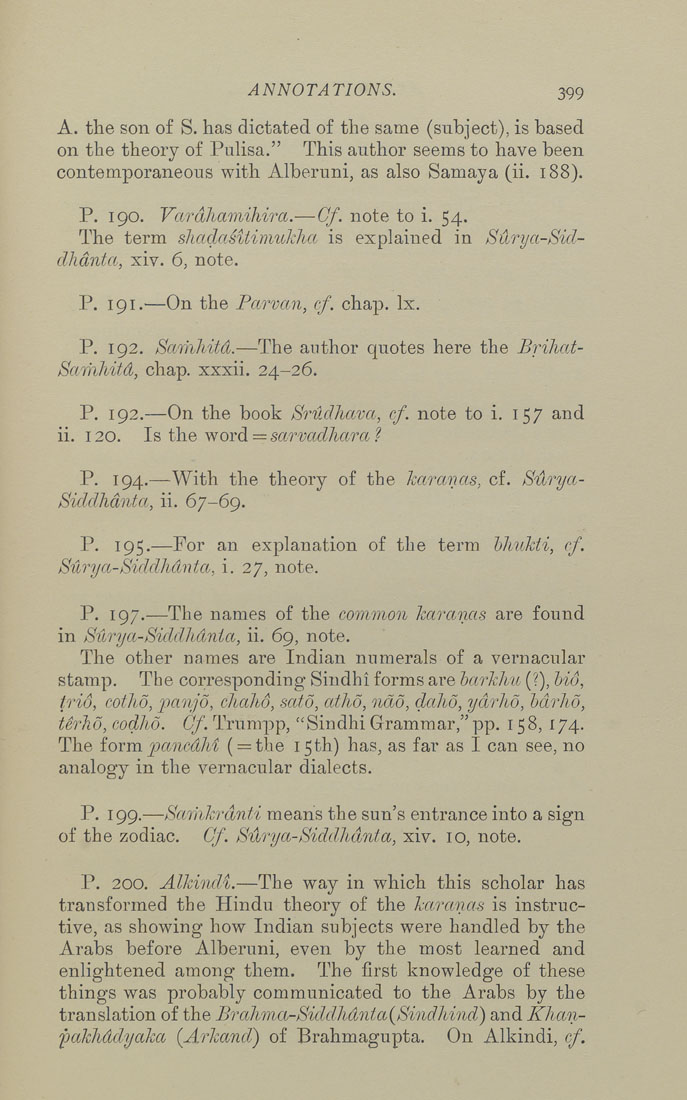ANNOTATIONS. 399
A. the son of S. has dictated of the same (subject), is based
on the theory of Pulisa." This author seems to have been
contemporaneous with Alberuni, as also Samaya (ii. 188).
P. 190. Vardhamihirct.—Gf. note to i. 54.
The term shaclasitiniukha is explained in Surya-Sid-
dhdntet, xiv. 6, note.
P. 191.—On the Pctrvctn, ef. chap. Ix.
P. 192. Setmhitdt.—The author quotes here the Brihett-
Setmhitd, chap, xxxii. 24-26.
P. 192.—On the book Srudhctva, cf. note to i. 157 and
ii. 120. Is the word = sarvctdhara ?
P. 194.—With the theory of the kctrctncts, cf. S'dryct-
Siddhdntct, ii. 67-69.
P. 195.—For an explanation of the term bhukti, cf.
Siirya-Sidclhdnta, i. 27, note.
P. 197.—The names of the common karanas are found
in Suryct-Siddhdnta, ii. 69, note.
The other names are Indian numerals of a vernacular
stamp. The corresponding Sindhi forms are barkhu (?), bio,
trio, cotho, p)anjo, chaho, sctto, cttho, ndo, (Jlahd, ydrho, bdrlio,
t^rho, cotiho. Gf. Trumpp, "Sindhi Grammar," pp. 158, 174.
The form, pctncdhi ( = the 15 th) has, as far as I can see, no
analogy in the vernacular dialects.
P. 199.—-Setriikrdnti means the sun's entrance into a sign
of the zodiac. Gf. SiXryct-Sidtlhdnta, xiv, 10, note.
P. 200. Alkintli.—The way in which this scholar has
transformed the Hindu theory of the ketretnas is instruc¬
tive, as showing how Indian subjects were handled by the
Arabs before Alberuni, even by the most learned and
enlightened among them. The first knowledge of these
things was probably communicated to the Arabs by the
translation of the Brahma-Sielclhdnta(Sindhind) and Khctn-
pakhddyaka (Arkand) of Brahmagupta. On Alkindi, cf.
|








